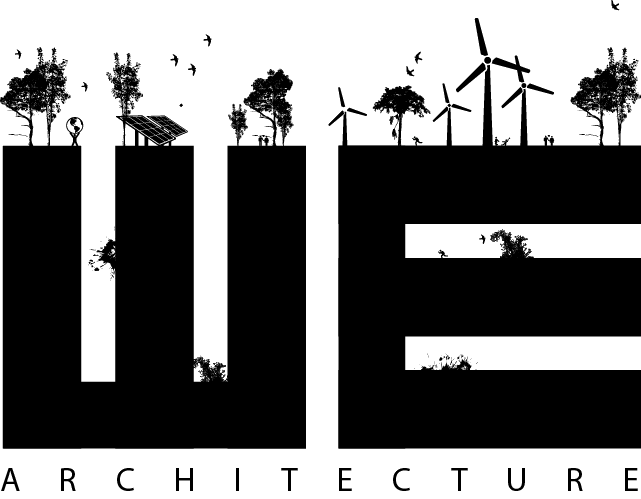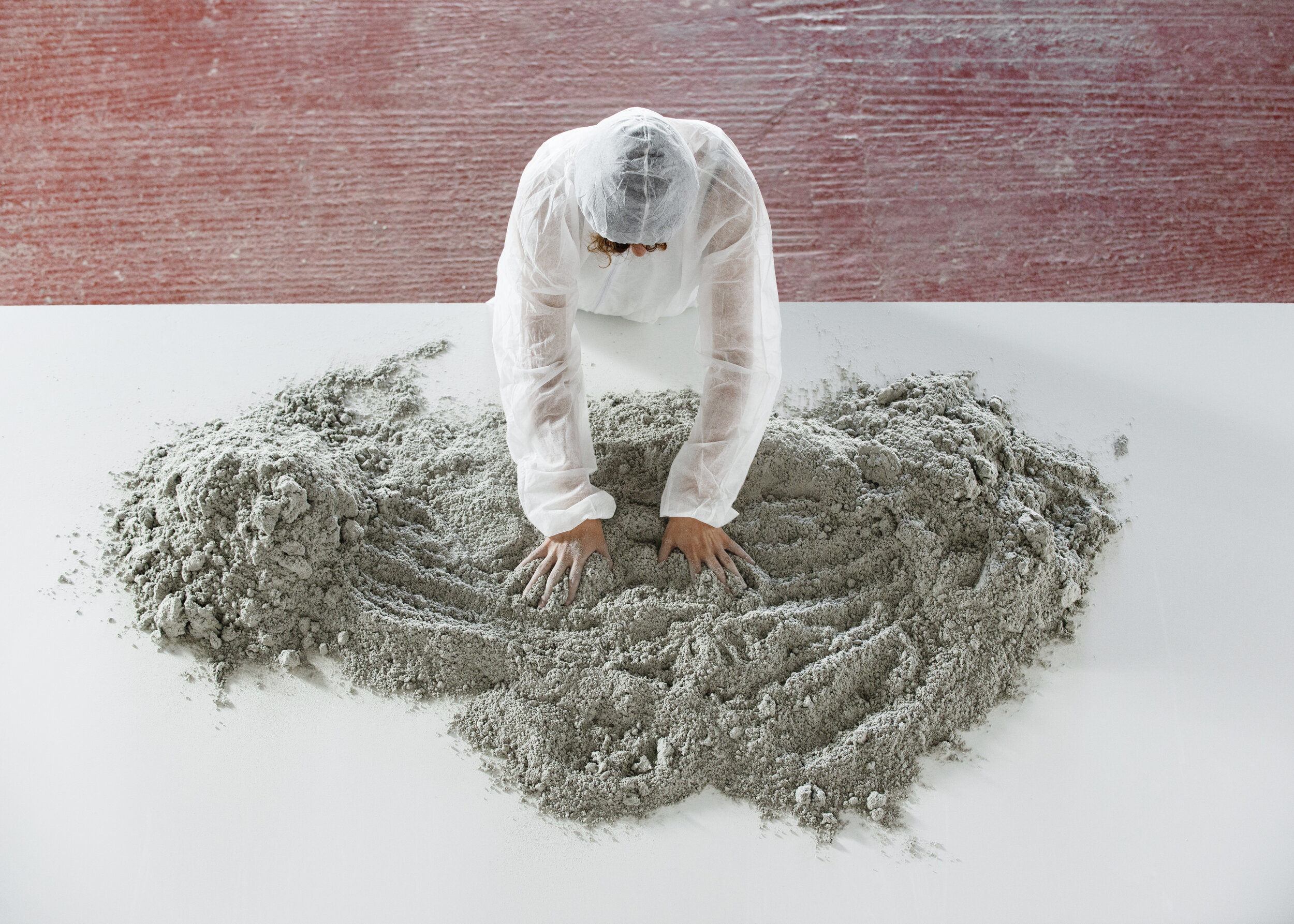PAPER HOUSE RESEARCH PROJECT
NAME OF PROJECT: Paper House Research Project
ASSIGNMENT: Research
TYPE: -
LOCATION: Temporary installation
YEAR: 2018
STATUS: Ongoing
ARCHITECTS: WE Architecture
COLLABORATORS: Paper Factor, Danish Arts Foundation
TEAM: Marc Jay, Julie Schimdt-Nielsen, Sofie Brincker, Corrado Galasso, Arielle Lavine, Ania Llyod Jones, Ivana Stancic, Alexandra Hansten
Planet earth is our greatest resource, our fundamental common ground. It provides humanity with a beautifully balanced ecosystem that protects the human race. Yet, how are we treating it at the present? Eighteen hectares of forest is felled to feed the growing demand of wood, while we are simultaneously covering our planet with concrete at an alarmingly fast pace. Reports published by CNN and The Guardian have shown that 22 billion tones of concrete are produced each year. In comparison this is more than twice the amount of all plastic produced ever.
Another aspect that weighs heavily on forest consumption is paper. 40.3% of paper production’s climate impact comes from the burning of trees for virgin paste.
“4 billion trees are annually cut for paper”
But paper may also be upgraded from a cradle-to-grave process, linked to the use of concrete, to a cradle-to-cradle one. This cycle lessens the need to cut down new trees and the amount of paper ending up in landfill, in turn reducing the climate impact of paper production by over 50% when using recycling material.
Paper cycle - Cradle to cradle
“Our purpose is, therefore, to combine these different challenges and problems towards a common solution.”
“Let’s take a new step towards sustainability: from recycle to upcycle!”
This process can be more developed, moving from the Re-cycle concept to the Up-cycle. While recycling is a chemical process that stretches out the life-cycle of a product, upcycling is defined as the reuse of products that can be altered to create a product of higher quality or value. It’s the idea of “One man’s trash is another man’s treasure”. Thus the goal of the research is not only about reducing the use of new materials, but also finding new and adaptable solutions to different contexts, with building modules that can be moved and used in different places and for different goals.
Paper House for WE is not only an opportunity to completely rethink our way of building, but also of living: instead of living amidst the waste we create, why not let waste be the building material of the cities in which we live?
For this reason, we have connected with an Italian factory which has developed a new product that converts waste paper materials and cellulose fibers from a certified forestry or recycled paper into a commercially usable product: Paper Factor.
“Paper is a reasonably simple material to recycle, and the infrastructure for collecting the waste is already in place.”
“The plethora of forms that paper is able to be fashioned into is limitless.
Paper Factor is a new module for architecture, ideal for recovering surfaces both vertical and horizontal: ceilings, walls, as well as furniture.”
“WE are proposing that we start to build, from our own recycled waste, a house of paper.”
In collaboration with the Italian inventor, WE Architecture are developing a new construction system based off this papier mache method developed by ‘Paper Factor’. WE is developing a new type of building system. A new building module that can be used both for interior and façade. The system is made up of only a few elements: the paper module, a timber frame and a joint system. It is a compact, light-weight and convenient system, easily assembled into different urban landscapes.
All Paper Factor products are handmade and are produced to be flame- and water-resistant, strong, durable and incredibly light. The product retains details of imperfection due to the manual work of each piece. At the same time, this kind of craftsmanship brings out the uniqueness of the panels in which no two pieces are the same. Yet, however, the machinery allows for precision and accuracy in the production of each piece.
The paper is treated with state-of-the-art technology and can be shaped into an infinite variety of shapes. The paper product ends up drawing similarities to stone, terracotta, or marble due to the natural variation in color and texture.
The fiber eventually deteriorates after it is recycled more than 7 times and, ultimately, the fiber ends its life molding or turning into ash. This can be put back into soil, unlike concrete, thereby laying the foundation for a new tree to grow, closing the life circle and creating a closed cradle-to-cradle process.
The house works with the maximum panel size provided by Paper Factor at the moment. The other smaller panels offered have different textures and designs and could be included to create an alternating pattern of panels as a façade system.
The simple timber structure allows for the paneling to be applied and added on or removed. The interior may also incorporate the modular effect of the grid or square with the 1200x1200mm panels becoming pieces of the furniture.
“With Paper House, WE are exploring our creativity, pushing it to the limit.”
How can we work with the paper, to obtain something singular? 2D becomes 3D. Orientation plays a role in a mass of layered papers. From a frontal view, the audience may read depth and volume, yet when you move about the object, the thin layers of paper completely contradict and reject the idea of a whole volume.
The sustainability we intend to pursue through the project is understood as a 360-degree concept, to be developed therefore not only in environmental terms, but also in social terms for example. Therefore, Paper House could be a home for refugees, temporary housing for the homeless, or a housing module to be utilized for natural disasters.
“This research is also a concrete response to a number of the UN 17 Goals. WE believe that architects play a key role in designing a better future by researching and defining sustainable cities and communities. “
With Paper House WE are working with Goals 9, 11, 12 and 15. First and foremost, the research aims at modifying the building industry, reducing wastes and the large amount of the natural resources and energy that it consumes. Developing the new construction and assembling system, WE is giving a new life to waste paper, in the building of an adaptable and movable house unit. The goal of innovation within the building industry is also linked to Goal 12 about responsible consumption and production, since the process has its starting point in the upcycle of paper. This of course also helps in halting deforestation, which is included in Goal 15. Finally, Paper House will represent a sustainable building module for less developed countries, as well as ensure adequate and affordable housing for those who does not have any due to economical reasons or environmental disasters.
Paper House is an ongoing process: this is OUR starting point, but the road is still long and open to further investigations and contemplation, would you also like to be part of this trip?



















